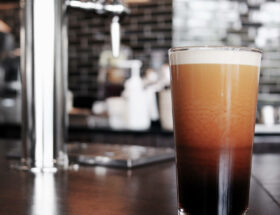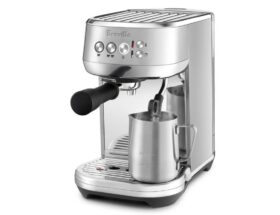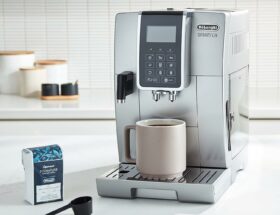
Cold Brew Coffee 101: How to Make Cold Coffee at Home
Cold brew coffee is becoming increasingly popular among coffee enthusiasts for its smooth and refreshing taste. In this blog post, we will walk you through the process of making cold brew coffee at home, step by step. Unlike hot brewed coffee, which relies on heat to extract flavor and aroma quickly, cold brew coffee is made by soaking coffee grounds in water at room temperature or in the refrigerator for an extended period of time. This slow and gentle brewing process produces a coffee that is lower in acidity and bitterness, resulting in a milder and naturally sweeter flavor profile.
Home Cold Brew Guide
Choosing the Right Coffee Beans for Cold Brew
When it comes to making cold brew coffee at home, selecting the right coffee beans is crucial. Opt for a medium to dark roast with rich flavors that can withstand the long brewing process. Look for beans that have notes of chocolate, nuts, or caramel for a smooth and balanced cold brew taste.
Ensure that the coffee beans are freshly roasted and ground just before brewing. Grinding the beans too early can result in a loss of flavor and aroma. Aim for a coarse grind consistency, similar to that of coarse sand, which allows for better extraction during the brewing process.
The Cold Brew Brewing Process
Now that you have the perfect coffee beans, let’s get started with the brewing process. Follow these simple steps:
- Measure out the coffee and water ratio. A good starting point is a 1:4 ratio, one part coffee to four parts water. Adjust according to your personal preference.
- Combine the coffee grounds and cold water in a jar or pitcher. Stir gently to ensure all the grounds are fully saturated.
- Cover the jar or pitcher and let it steep in the refrigerator for at least 12 hours. For a stronger brew, you can leave it for up to 24 hours.
- Once the brewing time is complete, strain the coffee using a fine mesh sieve, cheesecloth, or a coffee filter to remove the grounds.
- Your cold brew concentrate is now ready! Dilute it to taste by adding water, milk, or ice.
Remember that cold brew coffee is highly concentrated, so adjust the dilution based on your preference. Serve it over ice for a refreshing cold coffee experience.
Did you know that cold brew coffee has less acidity compared to hot brewed coffee? This is because the slow extraction process of cold brewing reduces the release of acidic compounds, resulting in a smoother and less bitter taste. So if you have a sensitive stomach or prefer a less acidic coffee, cold brew is the way to go!

Step by Step Guide: Making Cold Brew Coffee at Home
Step 1: Choose the Right Coffee Beans
When it comes to cold brew coffee, the selection of the right coffee beans is crucial. Look for beans that are specifically labeled as “suitable for cold brew” or “medium to dark roast.” These types of beans typically have a rich and bold flavor profile that works well for cold brewing.
Tips and Alternatives:
- Experiment with different coffee bean varieties to discover your favorite flavor profiles.
- Consider purchasing whole beans and grinding them yourself for the freshest taste.
- Explore specialty coffee shops or online retailers for unique and ethically sourced beans.
Step 2: Grind the Coffee to the Right Coarseness
The grind size of your coffee beans plays a vital role in the cold brew extraction process. Aim for a coarse grind, similar to the texture of sea salt. Grinding the beans too fine can result in a bitter and over-extracted brew.
Tips and Alternatives:
- Invest in a burr grinder for consistent and precise grinding.
- Adjust the grind size slightly based on your brewing method and personal taste preferences.
- If you don’t have a grinder, some coffee shops offer grinding services for their beans.
Step 3: Measure and Combine Coffee and Water
For a standard cold brew ratio, use a 1:4 coffee to water ratio. In simpler terms, for every cup of coffee grounds, add four cups of filtered water. Adjust this ratio based on your taste preference, experimenting with stronger or weaker brews.
Start with smaller batches to test the flavors and ratios before brewing larger quantities.
Tips and Alternatives:
- Use a kitchen scale to measure both coffee and water accurately for consistent results.
- Experiment with different ratios (e.g., 1:4, 1:5) to find your preferred strength.
- For a stronger brew, you can increase the coffee-to-water ratio or extend the steeping time.
Step 4: Stir and Let It Steep
Once you’ve combined the coffee and water, give it a good stir to ensure even extraction. Cover the container or jar and let it steep at room temperature for at least 12 hours, or up to 24 hours for a stronger brew.
Tips and Alternatives:
- Try different steeping times (e.g., 12 hours, 18 hours) to explore how they affect the flavor profile.
- If you prefer a smoother taste, consider using room temperature water instead of cold water for steeping.
- Experiment with adding spices or flavorings to the mixture during steeping for unique flavor combinations.
Step 5: Filter and Serve
After the steeping time, it’s time to filter out the coffee grounds. Use a fine mesh sieve, a cheesecloth, or a coffee filter to strain the cold brew concentrate into a clean container or pitcher.
Tips and Alternatives:
- For a cleaner brew, double-strain the concentrate using a coffee filter lined sieve followed by a fine mesh strainer.
- If you’re in a hurry, you can use a French press for filtering, but be mindful of sediment.
- Save the leftover coffee grounds for composting or as a natural exfoliant for your skin.
Step 6: Dilute and Customize
Cold brew concentrate is highly concentrated, so you’ll need to dilute it before serving. Mix the concentrate with an equal amount of water, or adjust the ratio to your taste preference. Add ice cubes and your choice of milk or sweetener for a customized cold brew experience.
Tips and Alternatives:
- Customize your cold brew with flavored syrups, alternative milks, or even a splash of your favorite liqueur.
- Instead of water, try diluting the concentrate with sparkling water for a fizzy, refreshing twist.
- Store any leftover concentrate in the refrigerator for up to two weeks for convenient future use.
Step 7: Enjoy Your Homemade Cold Brew
Pour yourself a glass of smooth and refreshing cold brew coffee, and savor every sip. Experiment with different brewing times, coffee bean varieties, and customizations to find your perfect cup of homemade cold brew.
Tips and Alternatives:
- Host a cold brew tasting party with friends and compare different brewing methods or bean origins.
- Experiment with cold brew in culinary recipes, such as using it as a base for marinades or desserts.
Wrap Up
Now that you’ve learned the art of making smooth and refreshing cold brew coffee, it’s time to put your newfound knowledge into practice. Remember to choose the right coffee beans and grind size, and follow the brewing process carefully. Once you’ve made a batch of cold brew coffee, store it properly to maintain its freshness.
We hope this guide has inspired you to start making your own cold brew coffee at home. It’s a simple and delicious way to enjoy a cool and refreshing drink, especially during those hot summer months. So why not give it a try and see for yourself?
If you have any questions or additional tips for making cold brew coffee, feel free to leave a comment below. We’d love to hear from you and continue the conversation!
For more coffee-related content, be sure to check out our other articles such as:
- How to Make Vietnamese Coffee: The Strong, Bold Coffee
- How to Hario V60: The Ultimate Guide to Making Perfect Coffee
- How to Siphon Coffee: The Slow and Elegant Way to Brew a Perfect Cup
- How to Aeropress: The Ultimate Guide to Making Amazing Coffee at Home
- How to Turkish Coffee: An Invigorating Coffee Experience
- World Coffee org
Thank you for reading, and happy brewing!









